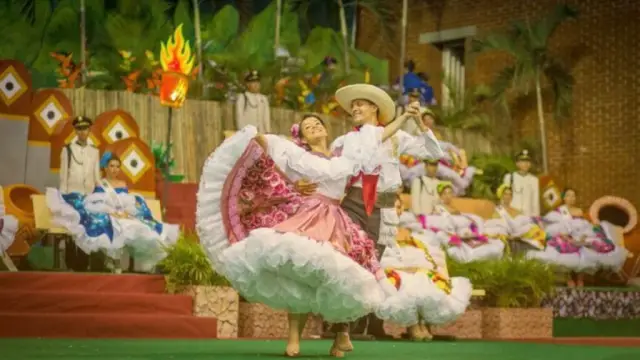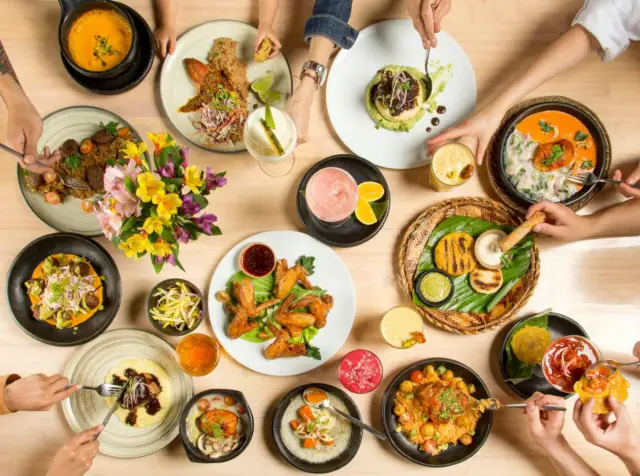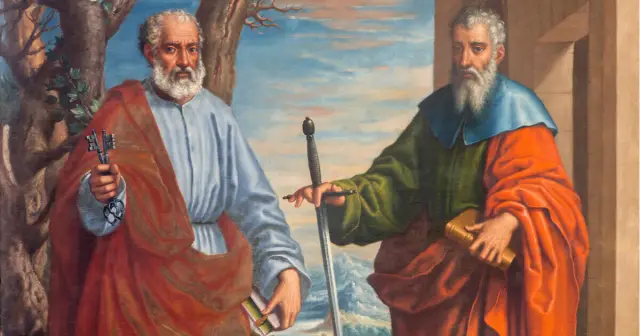The Feast of San Juan is one of the most representative and colorful celebrations of Colombian folklore. Celebrated annually on June 24th , this holiday has deep religious roots that are intertwined with the popular culture, regional identity, and artistic expression of various communities across the country. In Colombia, especially in the departments of Huila, Tolima, Caquetá, and other areas in the south and center of the country, these dates become a display of music, dance, traditional costumes, and overflowing joy. The celebration of San Juan not only honors important Christian figures but also highlights pride in ancestral traditions and the richness of national folklore. In this article, you will learn what exactly is celebrated on these days, how these customs originated, and why they are an essential part of Colombian cultural heritage.
What is celebrated on June 24 in Colombia?
June 24th commemorates the birth of Saint John the Baptist , a highly influential figure in Christian tradition. His celebration, which originally had a purely religious character, was adopted and transformed by Colombian communities until it became a truly popular festival. On this date, hundreds of towns and cities across the country are filled with color and tradition to officially kick off what many consider the most important cultural event in the Andean region: the Festival of San Juan.
This celebration takes on special significance in the department of Huila, where June 24th marks the beginning of a festive season that lasts several days and attracts thousands of national and international tourists. The atmosphere is filled with native music, traditional dances such as the Sanjuanero, traditional dishes, and countless cultural events that celebrate the heritage and identity of this region.

San Juan in Huila: Tradition and Reign
During the month of June, Neiva, the capital of Huila, becomes the center of one of the country's most emblematic festivals: the San Juan Bambuco Festival . This celebration, which has been declared a National Cultural Heritage Site, includes a variety of activities that highlight regional folklore and the living traditions of the Huila people.
Among the most notable events is the National Bambuco Pageant , in which young representatives from different departments of the country compete not only for their beauty, but also for their knowledge of the culture, their artistic talent, and their ability to dance the Sanjuanero. The competition is accompanied by folkloric parades with floats, troupes, and musical groups that parade through the city streets.
Also featured are the rajaleña competitions, a typical form of picaresque musical expression from the region, and the food fairs that offer a chance to sample the best of Huila cuisine. The collective joy, pride in traditions, and community spirit make this day an unforgettable experience for both locals and visitors.

History and origin of the Feast of San Juan
The tradition of celebrating Saint John's Day in June has its roots in the Christian festivals brought by Spanish colonizers during the 16th century. In Europe, especially Spain and Portugal, Saint John's Day was celebrated with bonfires, dances, and rituals related to fertility, the harvest, and the summer solstice. These practices were syncretized with Indigenous and Afro-Colombian customs in Latin America, generating a unique cultural expression.
In Colombia, this fusion was especially consolidated in regions where peasant and rural communities preserved rituals associated with land, water, and the Catholic religion. Over time, these celebrations acquired a broader artistic and social dimension, giving rise to festivals such as the Bambuco festival, which today is a symbol of regional identity and a major national tourist attraction.
Cultural importance of these festivals in Colombia
The San Juan festivities are not only of religious or folkloric significance; they also represent a vital platform for preserving cultural identity , strengthening the social fabric, and promoting local economic development. In every musical performance, every traditional costume, and every traditional recipe, the collective memory of entire generations is kept alive.
Furthermore, these events have become key opportunities to promote cultural tourism , attracting thousands of visitors each year, which benefits sectors such as hospitality, transportation, gastronomy, and crafts. At the same time, they promote knowledge and appreciation of cultural expressions that could be lost in modern times, such as rajaleña music, the creation of traditional costumes, and oral tradition.

Differences between San Juan
| Feature | Saint John's Day (June 24) |
|---|---|
| Religious figure | Saint John the Baptist |
| Type of celebration | Opening of festivities |
| Main activities | Festival opening, water rituals |
| Cultural presence | Very strong in southern Colombia |
Although both celebrations are deeply intertwined, each has its own unique atmosphere. San Juan is more associated with the beginning of popular joy and water rituals (such as river bathing or watersports), while San Pedro has a more solemn atmosphere, with processions, ceremonial music, and closing events such as the coronation of queens.
Where to experience the San Juan Festival in Colombia?
If you're looking to experience this festival in all its splendor, here are some of the best places:
Neiva, Huila: This is the main venue for the Bambuco Festival and the place where the tradition takes on its greatest significance.
Garzón, La Plata, Pitalito (Huila): Cities with traditional activities, parades and contests.
Espinal, Tolima: Famous for its Sanpedrino Festival, which also includes pageants and traditional dances.
Florencia, Caquetá: A more recent but growing celebration of cultural richness.
Villavicencio and areas of Cundinamarca: With a mix of modernity and cultural recovery.
Recommendations to enjoy the holidays
Book early : In cities like Neiva, hotels and flights fill up quickly.
Participate in all activities : from parades to concerts in public squares.
Try the regional cuisine : Don't miss the Huila barbecue, the Tolima tamale, and the artisanal chicha.
Wear comfortable but colorful clothing : Traditional costumes and accessories are part of the experience.
Respect local traditions : Remember that many activities have deep cultural and religious significance.
Why can't you miss it?
The Feast of San Juan is much more than a tradition; it's a celebration of the Colombian soul. Every musical note, every dance step, every traditional dish, and every friendly greeting is a way of saying, "Here we are, proud of who we are." Participating in this celebration is like immersing yourself in the living history of a people who have never stopped singing, dancing, and celebrating their heritage. Whether you attend out of curiosity or a love of culture, this experience will connect you with the most authentic aspects of Colombia.
